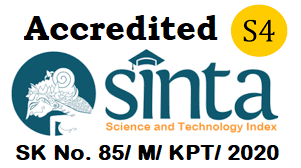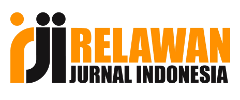Inventory Control Analysis using the EOQ Method for Optimizing Inventory of Auxiliary Raw Materials (Case Study: PT. Petrokimia Gresik)
Abstract
The availability of auxiliary materials is one of the important elements in the production process. Running out of these materials causes the product not to meet the product standards. Therefore, it is necessary to control the supply of auxiliary materials. PT. Petrokimia Gresik, in the process of making fertilizer, used auxiliary materials including Bentonite, Brucite, Red Clay, and Na/K-CO3. In this study, a comparison was made between the min-max method and Economic Order Quantity (EOQ) method. The data collected for this study include data on the use of auxiliary materials in 2021, holding costs, ordering costs, Consumption Rate (CR), lead time (LT), safety factor (SF), and unit cost. The results obtained that the use of the EOQ method can reduce the frequency of ordering auxiliary materials and provide savings in total inventory costs of up to 3% compared to the current min-max method. In addition, based on the calculation provide information that Brucite should be put on priority because it provides the highest total inventory cost compared to other auxiliary materials.
References
Arif, Z. Y., & Sukarno, I. (2020). Evaluasi Kebijakan Persediaan Bahan Baku Kantong Semen Untuk Mengurangi Biaya Persediaan (Studi Kasus: PT. Solusi Bangun Indonesia TBK). Jurnal Manajemen Industri dan Logistik, 138-145.
Asana, I. M., Raditya, M. L., Widiartha, K. K., & Santika, P. P. (2020). Inventory control using ABC and min-max analysis on retail management information system. Journal of Physics: Conference Series. doi:10.1088/1742-6596/1469/1/012097
Ballou, R. (1998). Business Logistics Management: Planning, organizing, and Controlling teh Supply Chain. (Ed.4). New Jersey: Pentice Hall.
Fithri, P., & Sindikia, A. (2014). Pengendalian Persediaan Pozzolan di PT Semen Padang. Jurnal Optimasi Sistem Industri, 665-686.
Jiraruttrakul, R., Smutkupt, S., Marksin, W., Liu, L., & Thanathawee, C. (2017). Applying EOQ Model To Reduce An Inventory Cost. Journal of Supply Chain Management: Research and Practice, 46-55.
Kinanthi, A. P., Herlina, D., & Mahardika, F. A. (2016). Analisis Pengendalian Persediaan Bahan Baku Menggunakan Metode Min-Max (Studi Kasus PT.Djitoe Indonesia Tobacco). Performa, 15, 87-92.
Rădăşanu, A. C. (2016). Inventory Management, Service Level And Safety Stock. Journal of Public Administration, Finance and Law(9), 145-153.
Riza, M., Purba, H. H., & Mukhlisin. (2018). The Implementation Of Economic Order Quantity For Reducing Inventory Cost: A Case Study In Automotive Industry. Research in Logistics & Production, 8, 289–301. doi:10.21008/j.2083-4950.2018.8.4.1
Ruauw, E. (2011). Pengendalian Persediaan Bahan Baku (Contoh Pengendalian pada Usaha Grenda Bakery Lianli, Manado). Jurnal ASE, Vol. 7, No. 1. 1 - 11.
Sari, L. K., Dur, S., & Husein, I. (2020). Using of EOQ and EPQ Methods in Minimizing Inventory Cost of Crude Palm Oil. Zero: Jurnal Sain, Matematika, dan Terapan, 36-43.
Vania, A., & Yolina, H. (2021). Analysis Inventory Cost Jona Shop with EOQ Model. Jurnal EMACS (Engineering, MAthematic and Computer Science), 21-22.
Waters, D. (2003). Inventory Control and Management. England: John Wiley & Sons Ltd.

This work is licensed under a Creative Commons Attribution-NonCommercial-ShareAlike 4.0 International License.













